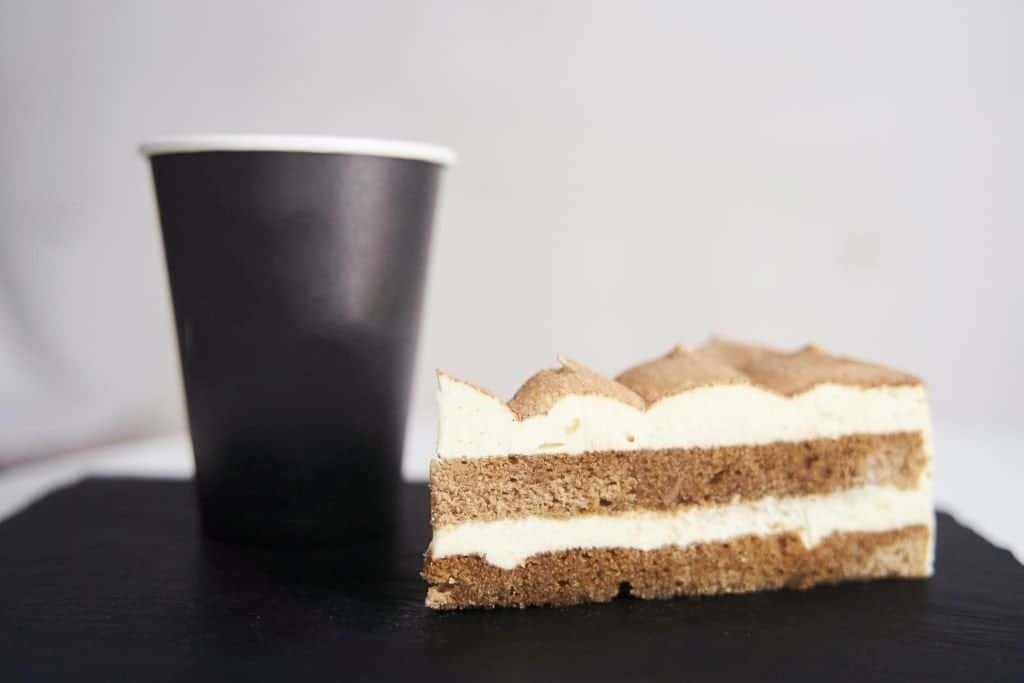There are times when you might find your coffee to be a bit too sweet for your liking. This can be due to various factors, such as using too much sugar, a naturally sweet coffee bean, or even the type of roast. Fortunately, there are multiple ways to adjust the sweetness of your coffee and find the ideal balance that suits your taste buds.
Whether you’re experimenting with new flavor combinations or looking for practical solutions, this article will provide helpful tips on how to make your coffee less sweet. It will explore different methods, such as adjusting the sugar content, using acidic elements, and altering brewing techniques. With these strategies, you’ll be able to enjoy a cup of coffee that is perfectly tailored to your preferences.
Factors Affecting Coffee Sweetness
Bean Variety
Different coffee bean varieties possess varying levels of natural sweetness. Some coffees are inherently sweeter, while others exhibit more bitterness or acidity. Bean characteristics are influenced by factors such as region, climate, altitude, and soil conditions. Experimenting with different bean varieties can lead to discovering a natural sweetness medium that suits individual taste preferences.
Roasting Profile
The roasting profile of coffee beans has a significant impact on the outcome of their flavor, including their level of sweetness. Lighter roasts typically preserve the natural flavors of the bean, while darker roasts emphasize a bolder and more bitter taste. To bring out more sweetness in coffee, try using beans with a medium roast or experiment with various roasting profiles to find the one that showcases the desired balance of sweetness and bitterness.
Brewing Techniques
Various brewing techniques can influence the degree of sweetness in coffee. Attention to factors such as water temperature, grind size, and brew time can help to optimize sweetness levels. Here are some tips:
- Adjust the grind size: A finer grind can increase surface area, allowing for better extraction and resulting in a sweeter cup.
- Water temperature: Optimal water temperatures range from 195°F to 205°F (90°C to 96°C), which enables the proper extraction of sweetness and acidity from the coffee grounds.
- Brew time: Experiment with different brew times to find the sweet spot that yields the ideal balance of sweetness, acidity, and bitterness.
By fine-tuning these brewing techniques, coffee drinkers can better control the sweetness of their beverage to suit their taste preferences.
Choosing the Right Coffee Beans
When trying to make coffee less sweet, selecting the right coffee beans is crucial. The variety and roast of the beans can significantly impact the flavor profile of your cup. In this section, we will cover the key differences between Arabica and Robusta beans, as well as single-origin vs. coffee blends.

Arabica vs. Robusta
There are two primary varieties of coffee beans: Arabica and Robusta. Arabica beans are typically grown at higher altitudes, which gives them a more refined acidity and sweetness compared to Robusta beans. On the other hand, Robusta beans are grown at lower altitudes and tend to be more bitter, although they also possess a stronger and more robust flavor with less acidity.
To make your coffee less sweet, you may consider using Robusta beans or a blend that includes Robusta for a stronger, more bitter taste. However, make sure to buy beans from a respected source to ensure the quality of your coffee.
Single-Origin vs. Blends
Single-origin coffee comes from a specific region or farm, offering unique flavors and characteristics. Since every region has its distinct climate, altitude, and soil composition, the coffee’s sweetness and acidity levels vary as well. If you want to reduce sweetness in your coffee, choose single-origin beans from regions with higher altitudes that produce a more balanced taste with lower sweetness levels.
Blends, on the other hand, are the result of combining beans from different regions or farms. They can provide a more consistent and balanced taste, mainly when the coffee roaster has carefully crafted the blend to enhance specific flavor attributes. For a less sweet cup of coffee, look for blends that include Robusta beans or those with a focus on darker roasts and less pronounced sweetness.
Experimenting with Brewing Methods

In this section, we will discuss various brewing methods and how they can affect the sweetness of your coffee. Experimenting with different brewing methods can help you find the perfect balance of sweetness that suits your taste.
Pour-Over
The pour-over method allows for better control over the brewing process, which can help you make coffee less sweet. To do this:
- Use a medium-fine grind for your coffee beans.
- Adjust the water temperature to around 195-205°F (90-96℃) to prevent over-extraction of bitter compounds.
- Experiment with the brewing time; a shorter brew time may result in less bitterness and sweetness.
French Press
The French Press method imparts a rich and bold flavor to the coffee. To make it less sweet:
- Grind your coffee beans coarsely to limit over-extraction.
- Keep the brewing time between 3-5 minutes to avoid excess bitterness.
- Consider adjusting the coffee-to-water ratio for a lighter and less sweet brew.
Aeropress
An Aeropress emphasizes the bright and fruity notes of coffee, making it an excellent option for those who prefer less sweet beverages. To control sweetness with the Aeropress:
- Opt for a medium or slightly coarse grind.
- Use water at 175-185°F (80-85℃) for a smoother-tasting coffee.
- Experiment with shorter brew times to minimize the extraction of sweet flavors.
Cold Brew
Cold brew coffee tends to have lower acidity and reduced bitterness, which may result in a naturally sweeter taste. To make cold brew less sweet:
- Use a coarser grind for your coffee beans.
- Try increasing the coffee-to-water ratio to weaken the sweetness.
- Experiment with shorter steeping times, such as 12-16 hours, to adjust sweetness levels.
By trying out these brewing methods and adjusting various factors, you can discover the ideal method for reducing sweetness in your coffee.
How to Make Coffee Less Sweet
If you find your coffee too sweet, there are several ways to adjust the flavor. Reducing sweetness in coffee can be achieved by modifying the ingredients or trying a different brewing method. Let’s explore some of these methods.
Firstly, using less sugar or sweetener is the most straightforward solution. Experiment with the amount of sugar or sweetener to find the level that is right for you. Alternatively, try using a natural sweetener like honey or agave nectar, which can often provide a different flavor profile than regular sugar.
Switching to a darker roast or choosing washed coffee can also impact the sweetness. Darker roasts often have a more bitter and intense flavor, while washed coffee beans tend to have reduced sugar content. This can balance out the inherent sweetness of your cup.
Another option is incorporating citrus juice, such as lemon or lime, into the coffee. Adding a small amount of citrus can counteract the sweetness and provide a refreshing twist.
Changing brewing methods might help too. Consider using a French press or trying a cold brew method, as these can produce different flavor profiles and might result in a less sweet coffee.
Lastly, here are a few tips to keep in mind:
- Always use fresh coffee beans for the best flavor.
- Adjust the coffee-to-water ratio to suit your taste preferences.
- Experiment with different brewing methods to find the one that produces the desired taste.
Keep these tips in mind, and you’ll be able to enjoy a cup of coffee with the perfect level of sweetness for your taste buds.
Alternative Sweeteners and Additives
When aiming to make coffee less sweet, there are various alternative sweeteners and additives you can consider. These options can enhance the flavor and aroma of coffee without contributing to excessive sweetness. In this section, we will explore different categories of alternative sweeteners and additives that can be used in coffee.
Natural Sweeteners
Natural sweeteners are a great way to add a subtle sweetness to coffee without loading it with sugar. Some popular natural sweeteners include:
- Honey: A natural sweetener that also provides health benefits
- Maple Syrup: Adds a mild, earthy sweetness
- Agave: A low-glycemic sweetener with a mild taste
These natural sweeteners can be used to customize the sweetness level of your coffee while maintaining a more balanced flavor profile.
Dairy and Non-Dairy Options
Dairy and non-dairy alternatives can also help to make coffee less sweet while contributing to a smoother texture. Some options to consider include:
- Unsweetened almond milk: Provides creaminess without added sugar
- Coconut cream: A plant-based alternative for a subtle hint of sweetness
- Oat milk: A non-dairy option that adds a creamy texture with minimal sweetness
By experimenting with different dairy and non-dairy options, one can fine-tune the taste of their coffee and achieve the desired level of sweetness without relying on sugar.
Conclusion
In summary, there are various methods to reduce the sweetness of coffee without sacrificing flavor. Experimenting with these techniques can provide a more enjoyable and personalized cup of Java.
Some tried and tested options include using less sugar, incorporating citrus juice such as lemon or lime, choosing a darker roast, or opting for washed coffee. These adjustments can effectively lower both added sugar content and the coffee’s natural sweetness.
Other health-conscious alternatives to make coffee less sweet are:
- Adding cinnamon for a subtle sweetness without extra sugar
- Adding a pinch of salt to decrease bitterness
- Incorporating spices or other natural flavorings instead of sugar
- Using unsweetened dairy or non-dairy milks, such as almonds or soy
With these techniques, coffee lovers can now enjoy a delectable, less sweet beverage that meets their individual preferences and dietary needs.






